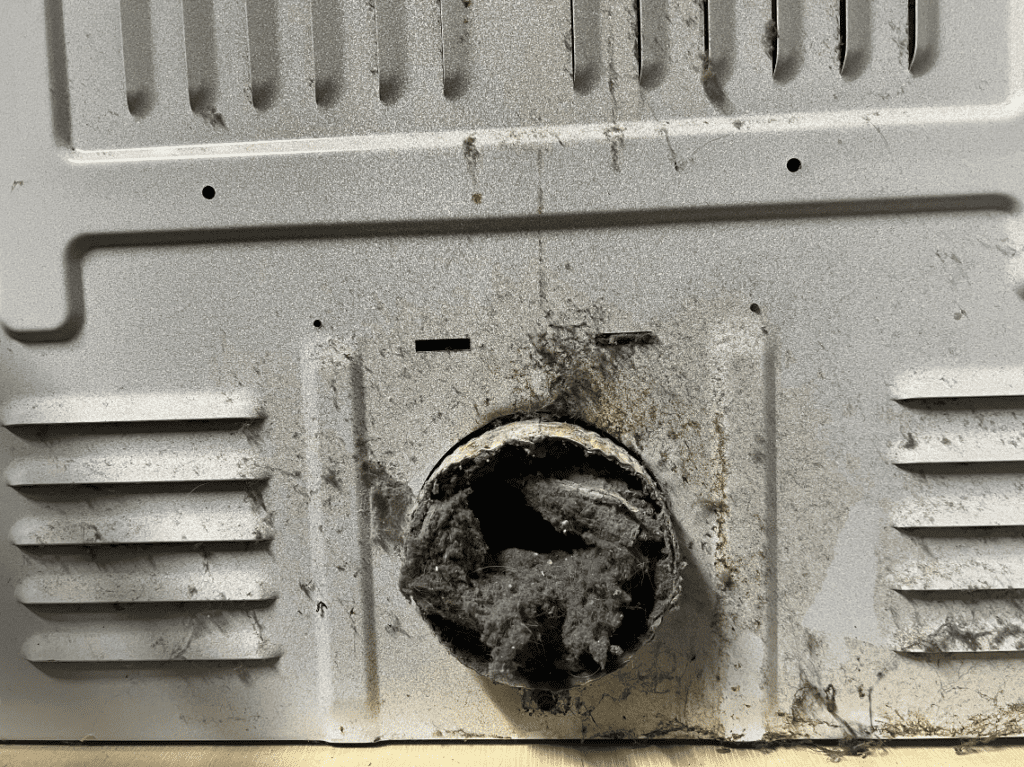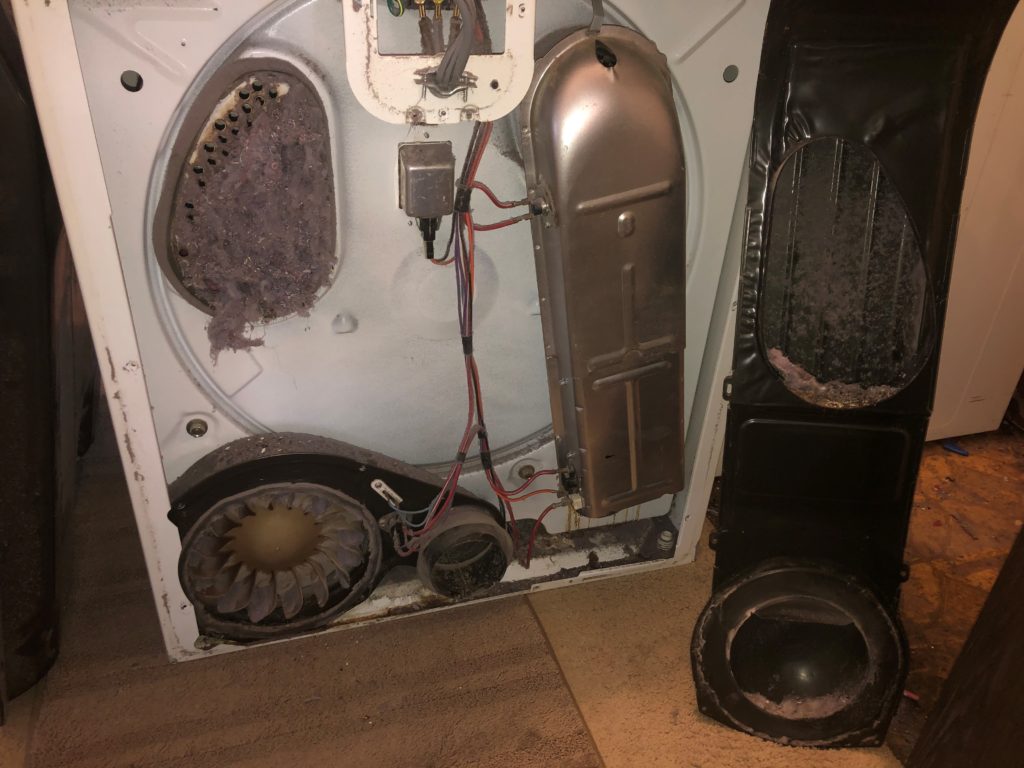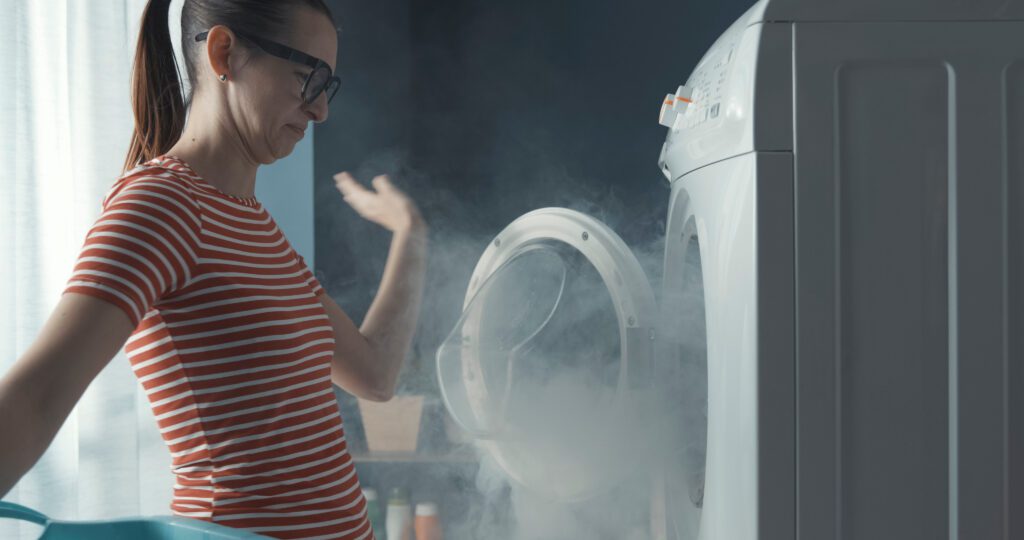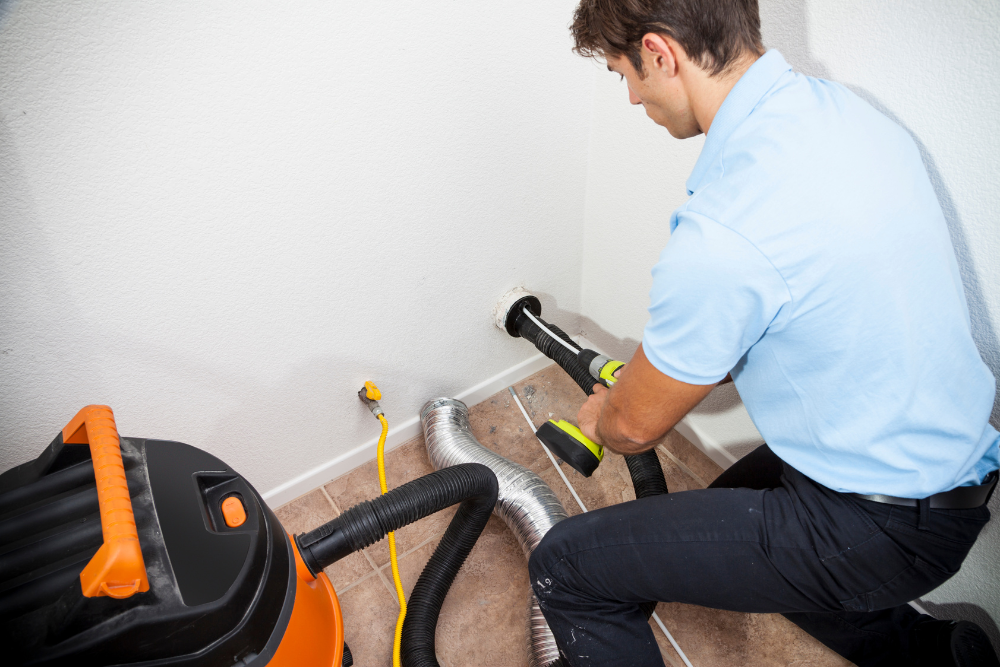Too hot to touch?
If your clothing seems warmer than normal at the end of a dry cycle, or, if the dryer exterior is too hot to touch, you should stop using your dryer and immediately solve the problem. An overheating dryer is an indication something is wrong. The machine, the clothing, or items touching the exterior of the dyer are much closer to igniting when operating temperatures are elevated.
Consumer Tip: If you are thinking of hiring a contractor to assist you, always hire a trained professional who works within the appliance industry that understands dryer performance. Your current problem is a fire safety issue and should be diagnosed and repaired by an experienced dryer service technician.
5 Reasons & Remedies for Overheating Dryers
Warning: If you plan to troubleshoot this yourself, always unplug the machine to disconnect power before working on an appliance.

Air Flow Problem
A reduction of the air flowing through the clothes dryer is the number one cause of a dryer overheating or a dryer not drying properly. If your dryer’s internal duct has a blockage, hot air becomes trapped inside the machine. Secondly, if the transition hose that connects your dryer to the wall is kinked or partially clogged with lint, it will reduce the pace at which the hot air escapes the dryer, causing internal operating temperatures to rise. There may also be lint blockage in part or all of the dryer duct/vent system. Excessive lint within the dryer vent system can reduce airflow. Finally, the exhaust outlet on the roof or side of your home may not be opening fully.
Remedy: To ensure proper dryer performance, you should properly clean both your dryer and venting system periodically. Restricted airflow is the number one cause of dryers overheating.
Heating Element Assembly
The heating element warms the air as it passes over the element. If a faulty element is a problem, it may produce heat continuously, even if the dryer has reached the proper temperature. When this happens, the dryer gets too hot. To determine if the heating element is at fault, a multi-meter is used to test the heating element for continuity.
Remedy: If the heating element does not have continuity, it needs to be replaced.
Cycling Thermostat
The cycling thermostat cycles the heat on and off to maintain the proper air temperature. If the thermostat is defective, it may “call for heat” for way too long. If all of the other components are working properly, test the thermostat by using a multimeter to test for continuity.
Remedy: If the thermostat does not have continuity, it needs to be replaced.
Felt Seal
Most dryers have a felt seal at the front and rear of the drum to prevent heat from escaping during operation. If the seal is worn or missing, the heat will not be drawn through the drum properly, causing temperatures inside the dryer to increase. Inspect the felt to ensure that it is providing a reliable seal between the drum and the front and/or back of the machine.
Remedy: If it is determined that all of the other components are working properly, the replacement of the felt seal may be necessary.

Blower Wheel
The blower wheel is powered by the drive motor and is the component that spins rapidly to move air through the machine during the each dry cycle.
1. OBSTRUCTION:
If there is a lint build-up within the blower wheel, or if very small socks, tiny garments, or fabric softener sheets bypass the lint trap/filter, the lint or other items will be trapped inside the blower wheel, which will reduce the efficient movement of air.
Remedy: Check the blower wheel and remove obstructions if present.
Warning: This will require checking under the drum or inside the machine. Always unplug the machine to disconnect power before working on an appliance.
2. PART FAILURE:
The blower wheel can wear and begin to wobble on the motor shaft. This can reduce the efficient flow of air through the dryer.
Remedy: If the blower wheel wobbles as it turns, it should be replaced.
Tip: If you plan to hire a contractor to inspect or perform service work related to your dryer and/or dryer vent system, always hire a trained professional who understands appliances and dryer performance.






